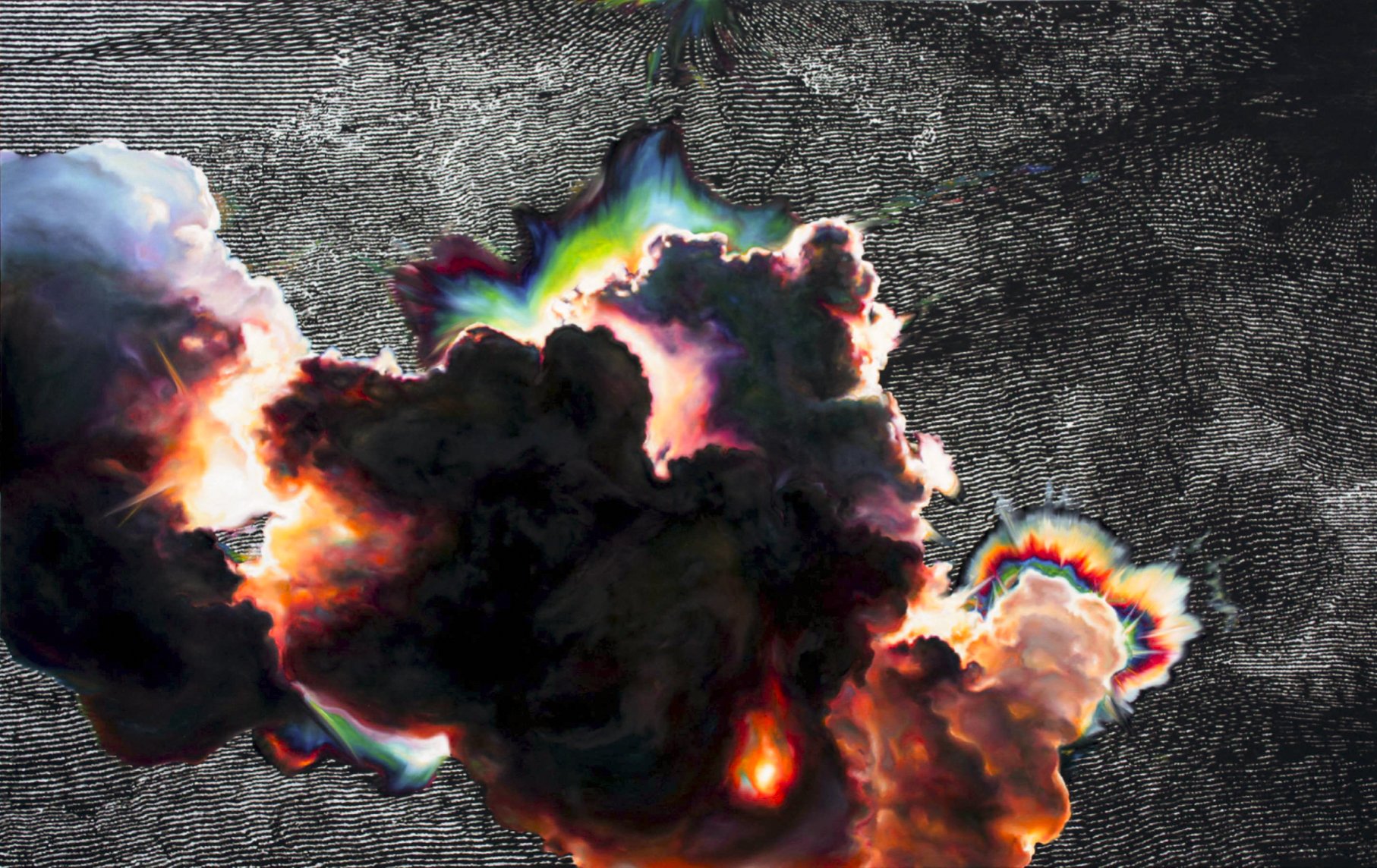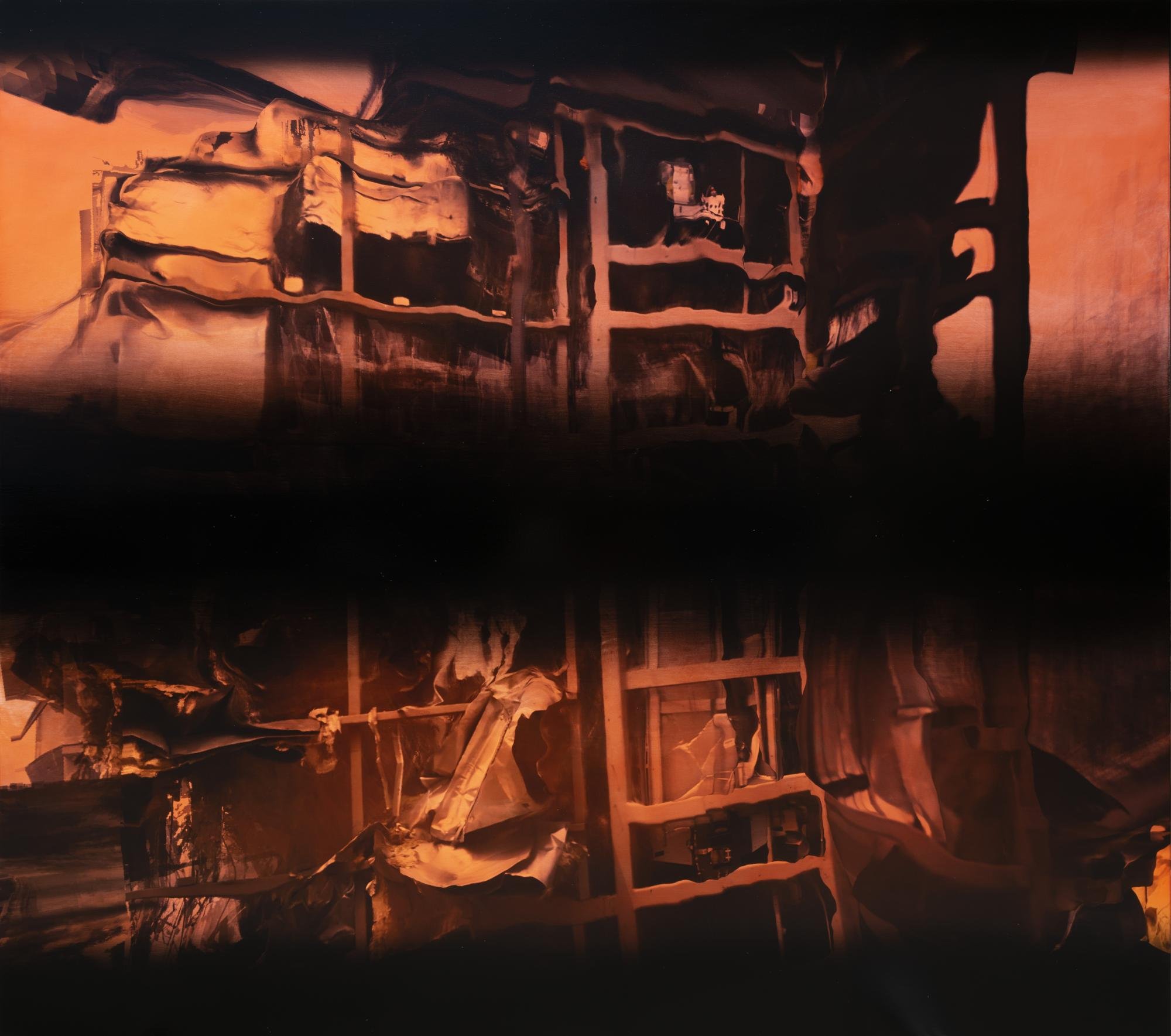Ola Vasiljeva
En Rachâchant, installation view Vleeshal Museum (2015)
courtesy the artist
photograph: Leo van Kampen
text by Lara Schoorl
Hope For The Rising Sun of Promise: East not West
Every September, for the past fourteen years, the start of Vienna’s gallery season coincides with Curated by; a monthlong festival that invites international curators to organize exhibitions in the Viennese contemporary art galleries, under an overarching theme. This was the first year that an “impulse provider” was invited to propose said theme to the curators. Elected by twenty-four participating galleries, Dieter Roelstraete, received the inaugural position to present a curatorial and artistic framework for the fourteenth edition of Curated by.
In the shadow of the Russian invasion in Ukraine and the ongoing war, Roelstraete proposed “East” for the theme. More specifically “Kelet,” Hungarian for East, and explicitly the opposite of “Nyugat,” West. Nyugat was the name of a Budapest-originated, avant-garde journal from the early twentieth century; “Nyugat” one word that captured the desire for what was happening culturally in Paris and Munich, in the West. At that time, Budapest was still the second capital alongside Vienna of the Austrian-Hungarian empire, an interesting fact when thinking about cardinal directions now. Austria, and Vienna in particular, has long carried a gateway position (for culture) between East and West. During in the first half of the last century and through the Iron Curtain, and in the past two decades, Austrian art institutions have often gravitated towards the West in terms of who and what was shown. Yet now, as people move from Kyiv to Lviv, flee from East to West and South to North, Roelstraete urged, more than ever it is important to shift our perspective from West to the (expanded) East. And to then not see East as a place of trauma, but of promise, because “Is it not in the East,” he asks, “where the sun rises?”
The theme, “Kelet,” remains open for interpretation to the gallerists and curators as East, of course, is a relative position or place depending on where one finds themselves. Although one imagines that this year the galleries might have invited curators and the curators in turn artists from the(ir) East. For Roelstraete “Kelet” provided a platform to contemplate a semantic shift for the meaning of East and or versus West through art in the European imagination. Curated by then may have formed a preliminary map of the state of art in the East (which can also be understood as Central or South and East of Vienna all the way to the Pacific). And such was the impression of the twenty-four exhibitions that spanned curators and artists of multiple generations from Ukraine, Slovenia and Georgia, to Kuala Lumpur and Mexico, and many countries in between.
The full-length curatorial essay by Roelstraete can be found here and below are highlights of this year’s Curated by, reflective of the various interpretations of “Kelet.”
SOPHIE TAPPEINER curated by Lukas Hofmann
Anna Zemánková
Untitled, the second half of 1960s
perforated paper, pastel, acrylic, china ink, embossing
60 x 41 (Detail)
Copyright and courtesy: The Artist’s Estate
Spread across two floors, SOPHIE TAPPEINER presented Pollen, a small retrospective of the self-taught Czechoslovakian artist Anna Zemánková (1908-1986). All works are on paper, all as seemingly fragile as their subjects, “my flowers,” as she called them, curator Lukas Hofmann explains. And all made in the twilight hours of dawn, before the rest of the world woke up—an unconscious nod to the East where the sun would rise as she worked. She used various techniques to create the flowers, often perforating the outlines and shapes in the paper and then coloring them with aquarelle paints, but some include stitching, ballpoint, and collage elements. They each required the viewer to take a step closer, especially her last works, which gradually became much smaller (a result of having both legs amputated and working exclusively from a board in her lap), to see the difference between thread and line and light, and then a step back in case the sun passes by or a light is lit behind them (as with the lamps), and their colors change, and shadows dance. Although the organic appearance of flowers, plants, butterflies and birds in the work is recognizable, the still not exactly true to nature imagery oozes a strong sense of elsewhere. Humble in their size and material, they breathe a kind of freedom.
CRONE WIEN curated by Eva Kraus & Volo Bevza
In 2022, the works were equally as sharp as the exhibition title. Showing exclusively young artists from Ukraine, curators Eva Kraus and Volo Bevza localized East in one place to inquire about the repercussions of the war (and prior events) that take effect both locally and globally, and how those are experienced. Any type of event, including a war, but also protests and uprisings, can now be witnessed collectively through various instant (social) media outlets. Bevza wrote: “On the ground, you can feel the war, but most importantly, it is ‘experienced’ digitally.” The war takes places in Ukraine, in the East, in our phones all over the world. Reality is stretched into the digital realm, or the digital realm absorbs our reality. Either way, a blurry in between space is created and it is in this liminal space that the artists in 2022 make work. Analog and digital realities bleed into each other in the photography-based works of Victoria Pidust and the paintings of Artem Volokitin of Bevza. A floor to ceiling curtain, also by Bevza, printed with an image of a ruined structure characteristic of his paintings divided the front space of the gallery from the back space. A curatorial intervention gesturing to both roles he occupied in the exhibition. One literally had to walk through or around the edges of the image of destruction enforced by the war in Ukraine. Although dark, the painterly quality and manipulation of the photographic image, as with all of his recent work, softens the harsh visual as it swayed lightly in the gallery space. A contradiction felt also in mediated reality. Not only the image but our sense of reality was distorted moving through the exhibition. Behind the curtain, Yevgenia Belorusets, well-known for her war dairies presented an older work. “Please Don’t Take My Picture Or They’ll Shoot Me Tomorrow” (2015) is part of the series “Victories of the Defeated” which documents the lives of communities during the military conflict in Donbas (indicating too that this war has been ongoing) through photographs and texts. A two-sided sculptural installation, on one side the exaggerated large cover page of a fictional paper Today’s News, and on the other side a portrait of miner a filled up the center of the front space. Through irony—the paper’s subtitle reads “You’re reading a quality-looking newspaper with a seriously dubious name”—Today’s News criticizes the misinformation that the media spreads and how it corrupts the truth, another way in which our reality, be it digital or analog, is distorted.
WONNERTH DEJACO curated by Kilobase Bucharest
Alex Horghidan
Untitled [series Polyamory], 2020
graphite on paper framed
35 x 35 cm
Courtesy of the artist, TRIUMFAMIRIA, Museum of Queer Culture and Family Servais Collection
WONNERTH DEJACO opened its doors two years ago and although this was their first time participating in Curated by, their presence was strong. The group exhibition JOY ~ JOY ~ JOY ON THE PEPPERSIDE OF SUPRANFINITE was one of the few shows where the work completely took over; it was louder than the standard white cube aesthetic of the space, but in a way that was welcoming, meeting the viewers at their frequency. The curators, Dragos Olea and Sandra Demetrescu, who collaborate under the hybrid curatorial practice KILOBASE BUCHAREST, brought us dreams of a future in a utopian queer universe called Suprainfinite. Suprainfinite is a space imagined by the art collective Apparatus 22, which includes Olea, in 2015. It is used here in the fictional locale of Pepperside to contemplate hope and joy, and how those experiences can support our future on Earth. They utilized a science fictional approach to explore the idea of utopia, proposing that in radical imagination we find tools the that can facilitate change and evolution in the present. This attitude was visualized by a curatorial intervention Title for an Exhibition (2021) installed in the window and visible first from outside the gallery. In various languages, an LED loop said: “queer since the dawn of time” and “our queer forefathers” suggesting that queerness has always been present in the world. Inside, the “ultra fragile” Shields (2019-ongoing) adorned with tassels or stitching by Irina Bujor rounded off the corners of the first room. A soft voice seeped from behind them, sharing wishes that would change the violence in the realities of transgender people. In the second adjacent room, Irresistible (2021), a short film by Barbora Kleinhamplová in collaboration with Mistress Velvet, features the late queer dominatrix and their BDSM practice; as with their community organization and activist positions, Mistress Velvet used BDSM as a process to foster systemic change in the form of, for example, reparations by letting their white cis male clients read and study Black Feminist Theory. The curators made a point that queerness can become isolated in a bubble that to other communities is perceived as inaccessible or even violent. JOY ~ JOY ~ JOY aimed to not only leisurely depict joy but also the importance of notions of consent, care and comfort, which are of necessary concern to all people. These acts of care were scattered throughout the exhibition, in particular in the pencil drawings of Alex Horghidan’s Polyamory series (2020) in which groups of people, sometimes dressed sometimes not, but always in the comfort of a soft environment of grass, pillows, plants or a bed, and each other are portrayed at rest.






